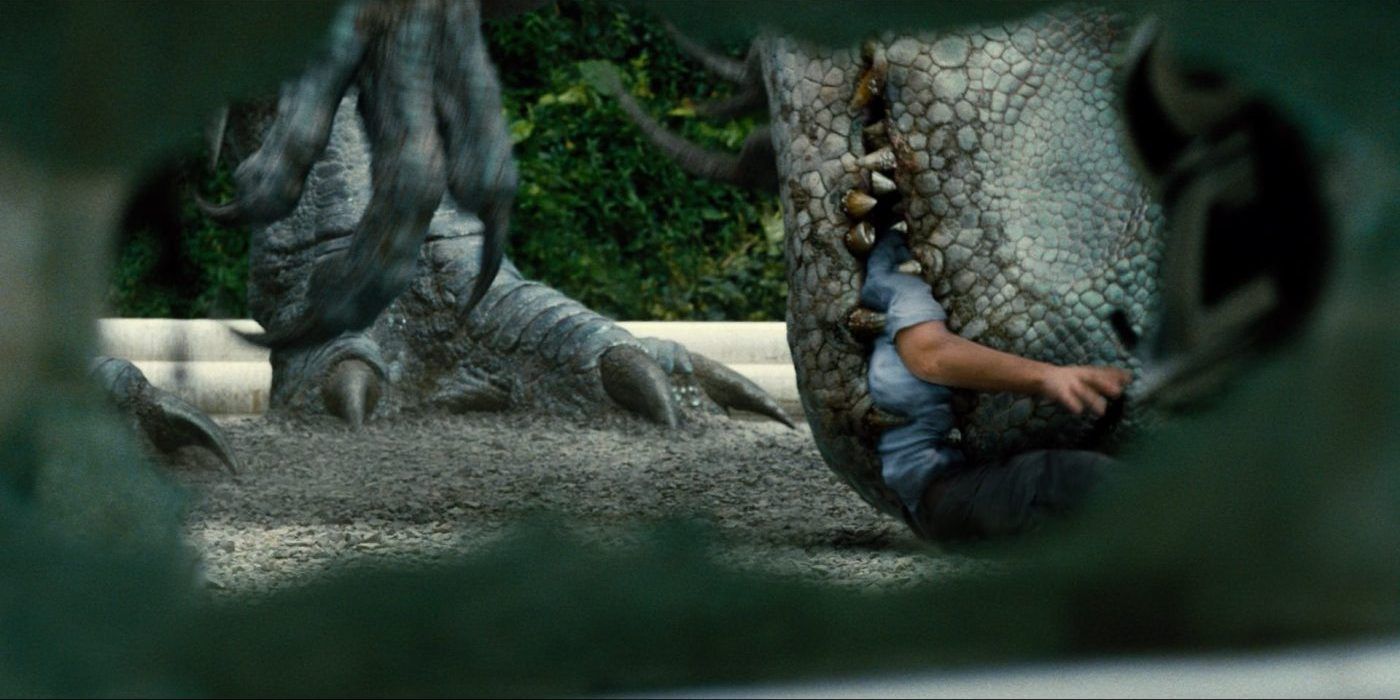The 2015 film Jurassic World mirrors the themes felt from its predecessor saga, Jurassic Park, but at its core, it also retells one of the oldest and most famous literary horror stories. This fun Easter egg comes in the form of the villain, the Indominus rex, a genetically modified dinosaur crafted for entertainment and greed that is quickly perceived as a monster. Almost immediately upon her introduction in the film, the Indominus rex manages to escape its cage, and wreak havoc on the theme park and its parkgoers.
SCREENRANT VIDEO OF THE DAY
Jurassic World tells the continuing story of what it would be like to have dinosaurs on Earth in present times if they coexisted with humans. The Indominus rex, the main villain of the movie, is a genetically modified dinosaur crafted by scientist Dr. Henry Wu. Wu is tasked with creating a new dinosaur for the titular theme park’s next attraction to draw in more revenue. It is created using the genome of a Tyrannosaurus rex, a velociraptor, and various other animals and dinosaurs to make it highly intelligent, physically overbearing, and increasingly adaptable based on the environment it is in. But the film may have missed the mark on a full reimagining of the classic novel that inspired it.
Jurassic World borrowed heavily from Mary Shelley‘s 1818 novel Frankenstein but completely muddled the tale's message by having the writers treat the monster as nothing more than nefarious. It tells the story of scientist Victor Frankenstein, who experimented with creating life from non-living matter. In the story, Frankenstein manages to bring life to an eight-foot creature of his own design and crafted of stolen body parts that do not originate from the same person. When the creature comes to life, it is seen as hideous and grotesque to everyone including itself, and he struggles to make any meaningful connections with other humans. As a result, the creature grows full of bitterness and rage, seeking murderous revenge on his creator.
Frankenstein’s Monster & The Indominus Rex Are The Same

Jurassic World takes many of the same characteristics from Frankenstein’s monster to conceptualize the Indominus rex. Both creatures are built of multiple components in a lab, by hubristic scientists. Each is made to be intelligent, but exceeds the expectations of its creator. They are both considered to be self-aware and successfully manage to outsmart their captors to avoid detection. Additionally, neither antagonist is given the opportunity to socialize properly with humanity and eventually seeks out companionship on their own. The Indominus rex of Jurassic World establishes itself as the leader of a group of domesticated velociraptors, while Frankenstein’s monster attempts to force his creator to make him a female companion.
The writers of Jurassic World make the Indominus rex a villain by only allowing audiences to see her through the point of view of those that made her, and who she fought against. Viewers are never given the opportunity to see why she behaves the way she does, something the book allows for its monster. With Frankenstein, the monster is given the chance to retell the story from his perspective, granting the reader a deeper understanding of and some sympathy for the book’s antagonist. Unfortunately, the Indominus rex serves a single purpose: to be an adversary for the humans who attempted to exploit her in the first place. What is classically not considered is that Mary Shelley's monster and the Indominus rex could both be seen as victims of the greed and ambition of people. They are forced to live in a world that is not ready for them, and directly causes their suffering.
The original Jurassic World film tackles one of the oldest horror stories at the heart of this science fiction thriller. But it may have missed the point Shelley was trying to make altogether in Frankenstein. Monsters are not born; they are made, and like most monsters, they can also be seen as victims of their circumstances.
